A fuller petunia plant involves a combination of proper care, cultivation techniques, and the selection of suitable varieties. Petunias are popular flowering plants appreciated for their vibrant blooms and versatility in various garden settings. Petunias are vibrant and popular flowering plants known for their prolific and colorful blooms. Belonging to the Solanaceae family, these annuals or perennials, depending on the variety, are native to South America, particularly Argentina. Petunias have become a staple in gardens, hanging baskets, containers, and landscapes due to their ease of care, versatility, and ability to thrive in various environments.
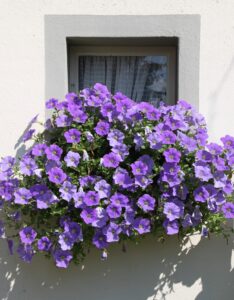
Petunias come in a wide array of varieties, each offering unique characteristics. Common types include grandiflora, multiflora, milliflora, and spreading/trailing varieties, each with distinctive flower sizes, shapes, and growth habits. To encourage a fuller petunia plant, consider the following tips:
Choose Cultivars Wisely
There are several petunia cultivars known for their bushy and fuller growth habits. These cultivars are bred to exhibit compact and mounding characteristics, making them ideal choices for creating lush and dense displays. Here are some popular petunia cultivars known for their fuller growth:
Supertunia Series: Supertunia petunias, such as ‘Supertunia Vista’ and ‘Supertunia Trailing,’ are renowned for their vigorous growth and trailing habits. They produce an abundance of flowers and create a full, cascading effect in hanging baskets and containers.
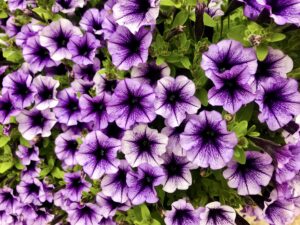
Cascadia Series: Cascadia petunias, such as ‘Cascadia Rim Magenta’ and ‘Cascadia Indian Summer,’ are recognized for their compact and mounding growth. They are suitable for both containers and garden beds.
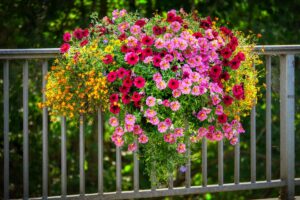
Double Wave Series: Double Wave petunias feature double blooms and a spreading growth habit. They offer a fuller appearance with their densely packed, petal-filled flowers.
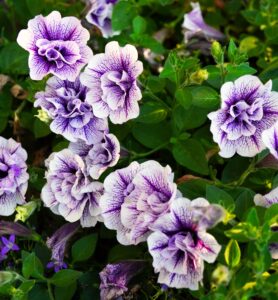
Multiflora Series: Multiflora petunias, like ‘Multiflora Blue’ and ‘Multiflora Pink,’ are known for their prolific blooming and bushy growth. They work well as bedding plants, adding color and volume to garden landscapes.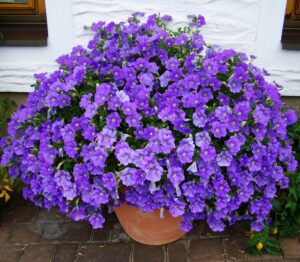
When selecting petunia cultivars for a fuller appearance, consider the specific growth habits mentioned in their descriptions. Additionally, providing optimal growing conditions, including sufficient sunlight, well-draining soil, and regular deadheading, will contribute to the overall fullness of the petunia plants.
Pinch the Plant to get Fuller Petunia
Pinching is a common gardening technique that involves removing the growing tips of a plant to encourage branching and a fuller, more compact growth habit. When applied to petunias, pinching can result in a bushier plant with more flowers. Start pinching your petunias when they are young and have developed several sets of leaves. This encourages branching from an early stage.
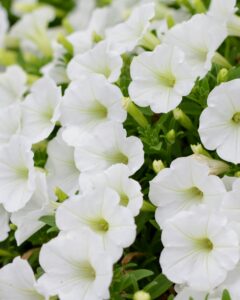
Locate the growing tips, which are the actively growing points at the ends of stems. They are usually soft and tender. Using your fingers or pruning shears, pinch or cut off the top inch or two of the growing tips. This removes the apical dominance, signaling the plant to branch out. Throughout the growing season, repeat the pinching process when the plants have added several inches of new growth. This can be done every two to three weeks.
Provide adequate sunlight
To promote a fuller and healthier petunia plant, providing adequate sunlight is crucial. Petunias are sun-loving plants, and the right amount of sunlight contributes to robust growth and abundant flowering. Petunias thrive in full sun, which is generally defined as at least 6 to 8 hours of direct sunlight per day. Choose a location where your petunias can receive sunlight throughout the day. This can be in a garden bed, hanging basket, or container.
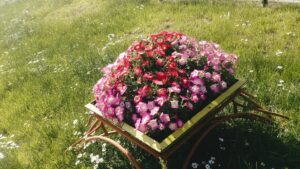
Petunias may tolerate partial shade, but they tend to produce fewer flowers in shadier conditions. If growing petunias in containers, consider the ability to move the containers to follow the sun. This allows you to optimize sunlight exposure. Be mindful of changes in sunlight patterns throughout the seasons. Adjust the placement of your petunias to maximize exposure during different times of the year.
Properly Fertilize Petunia Plant to get Fuller Petunia
Fertilizing your petunia plants is an essential aspect of promoting healthy growth and encouraging a fuller display of flowers. Use a balanced, all-purpose fertilizer with equal N-P-K (Nitrogen, Phosphorus, Potassium) ratios or a fertilizer specifically formulated for flowering plants. As petunias transition to the flowering stage, consider switching to a fertilizer with a higher phosphorus content to promote blooming. Begin fertilizing when the plants start actively growing in early spring. This is usually after the last frost date in your region.

Look for fertilizers specifically formulated for flowering plants or use a “bloom booster” fertilizer. These formulations often contain lower nitrogen levels to promote blooming. While nitrogen is an essential nutrient for plant growth, excessive amounts of nitrogen can encourage lush foliage at the expense of flowers in some flowering plants, including petunias. If you want to promote fuller petunias with more blooms, you might consider adjusting your fertilizer regimen to limit nitrogen.
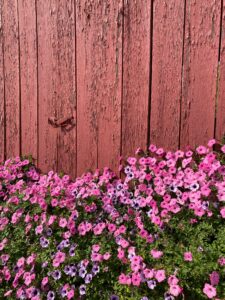
Container plants may need more frequent fertilization, as nutrients leach out of the soil more quickly. Granular or slow-release fertilizers release nutrients gradually, providing a longer-lasting effect. Avoid fertilizing during periods of extreme heat, as this can stress the plants. After applying fertilizer, water the plants thoroughly. This helps nutrients move into the soil and reach the root zone. Regularly monitor the plants for signs of nutrient deficiencies or excesses. Adjust fertilizer application if needed.
Key Role of Soil Media to get Fuller Petunia
To promote fuller growth and abundant flowering in petunias, it’s crucial to provide them with a well-balanced and nutrient-rich soil mix. Choose a soil mix that provides excellent drainage. Opt for a high-quality potting mix that is enriched with organic matter. Look for mixes containing compost, well-rotted manure, or other organic materials to provide essential nutrients. Petunias thrive in slightly acidic to neutral soil. Aim for a pH range between 6.0 and 7.0. You can test and adjust the pH using amendments if necessary. If you’re growing petunias in containers, choose a lightweight, soilless mix designed for container gardening. These mixes are well-aerated and allow for better root development.
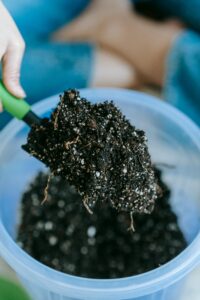
Deadheading Petunia Flowers
Deadheading is a simple and effective practice to encourage fuller growth and continuous blooming in petunias. This involves removing spent or faded flowers from the plant. As flowers begin to fade or wilt, they should be promptly removed. Pinch or trim the faded flowers just above a set of healthy leaves or buds. Use your fingers or a pair of clean and sharp scissors or pruning shears. When deadheading, make clean cuts to avoid damaging the stem. Cut at a slight angle just above a leaf node or set of leaves. This encourages new growth to emerge from the nodes, resulting in a bushier and fuller plant. Deadhead petunias regularly throughout the growing season, especially during peak blooming times.
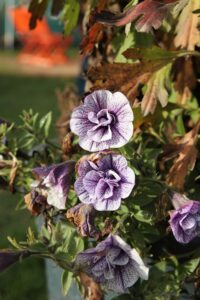
Whether adorning garden borders, spilling over containers, or adding a burst of color to hanging baskets, petunias remain a beloved choice for gardeners seeking vibrant and low-maintenance flowering plants. Their ability to thrive in different conditions and provide a profusion of blooms makes them a delightful addition to any garden or landscape.


